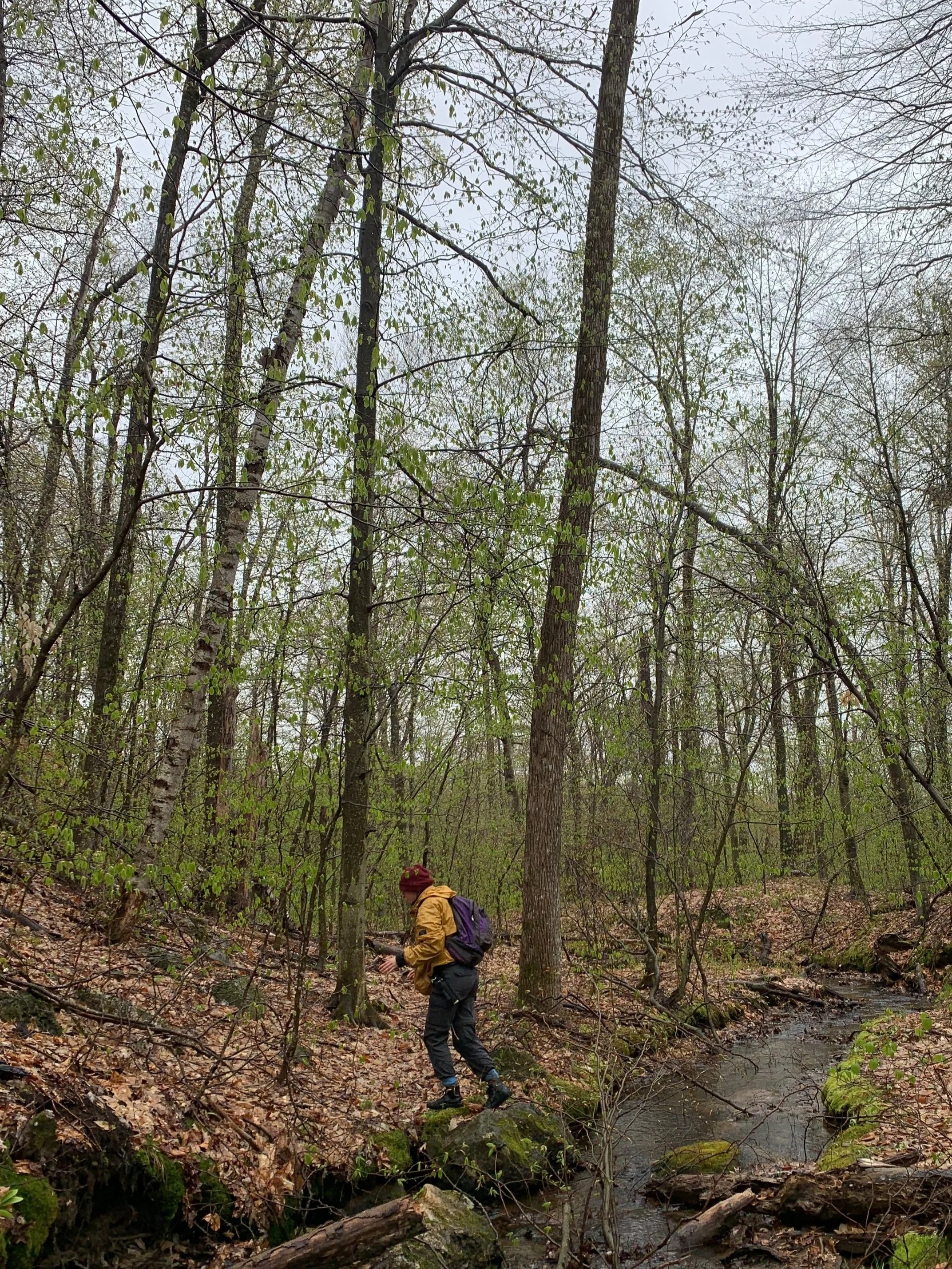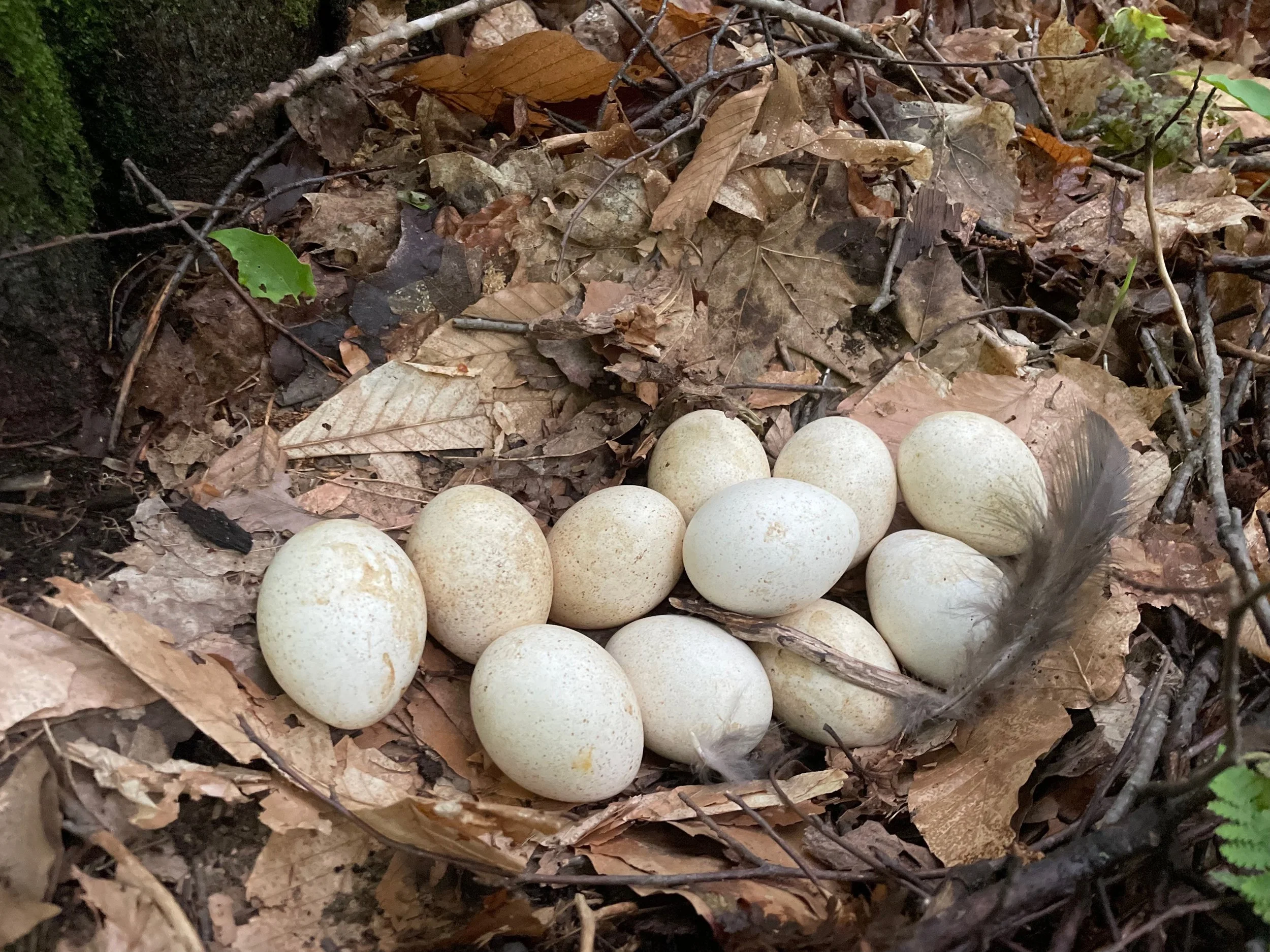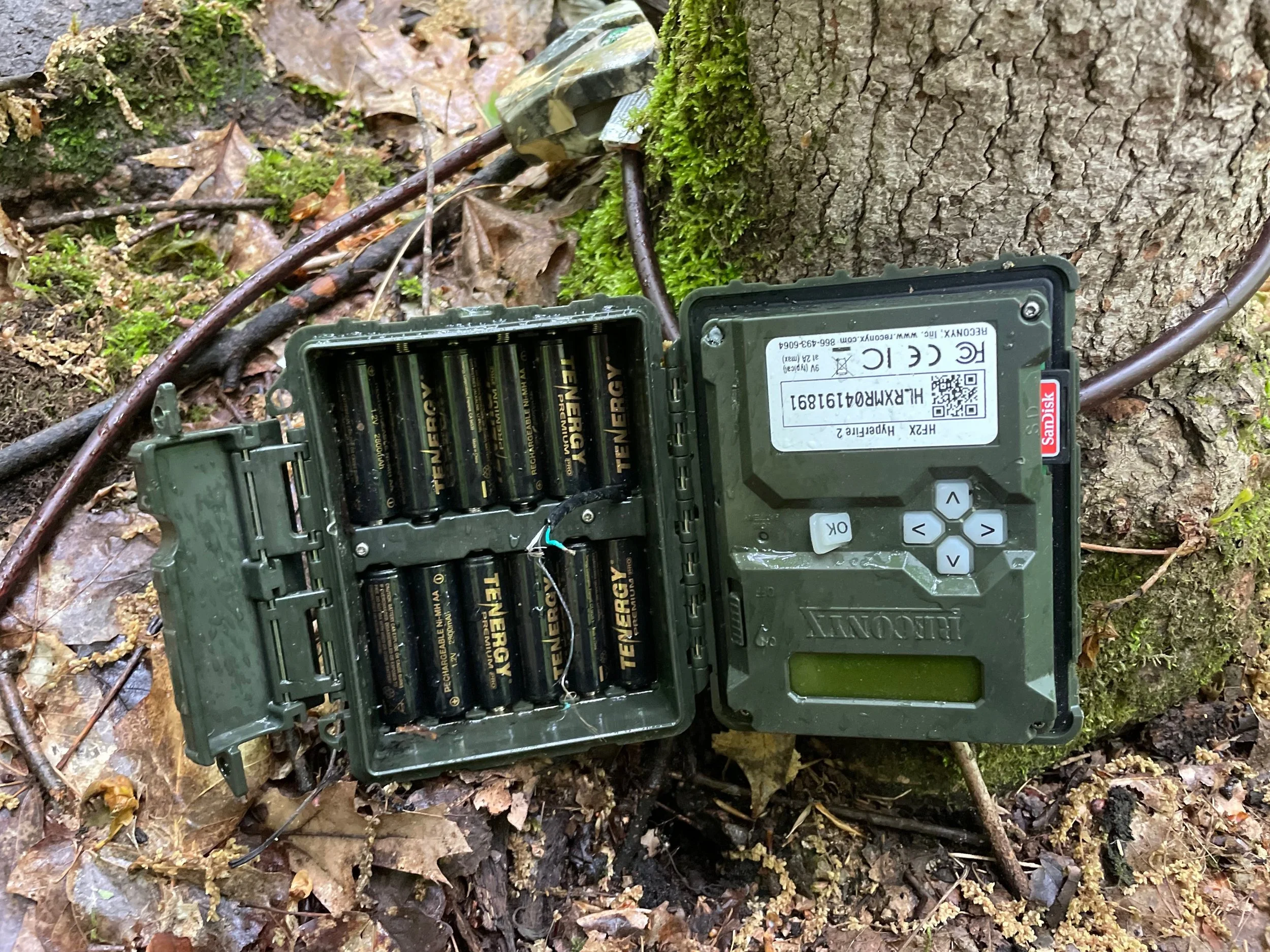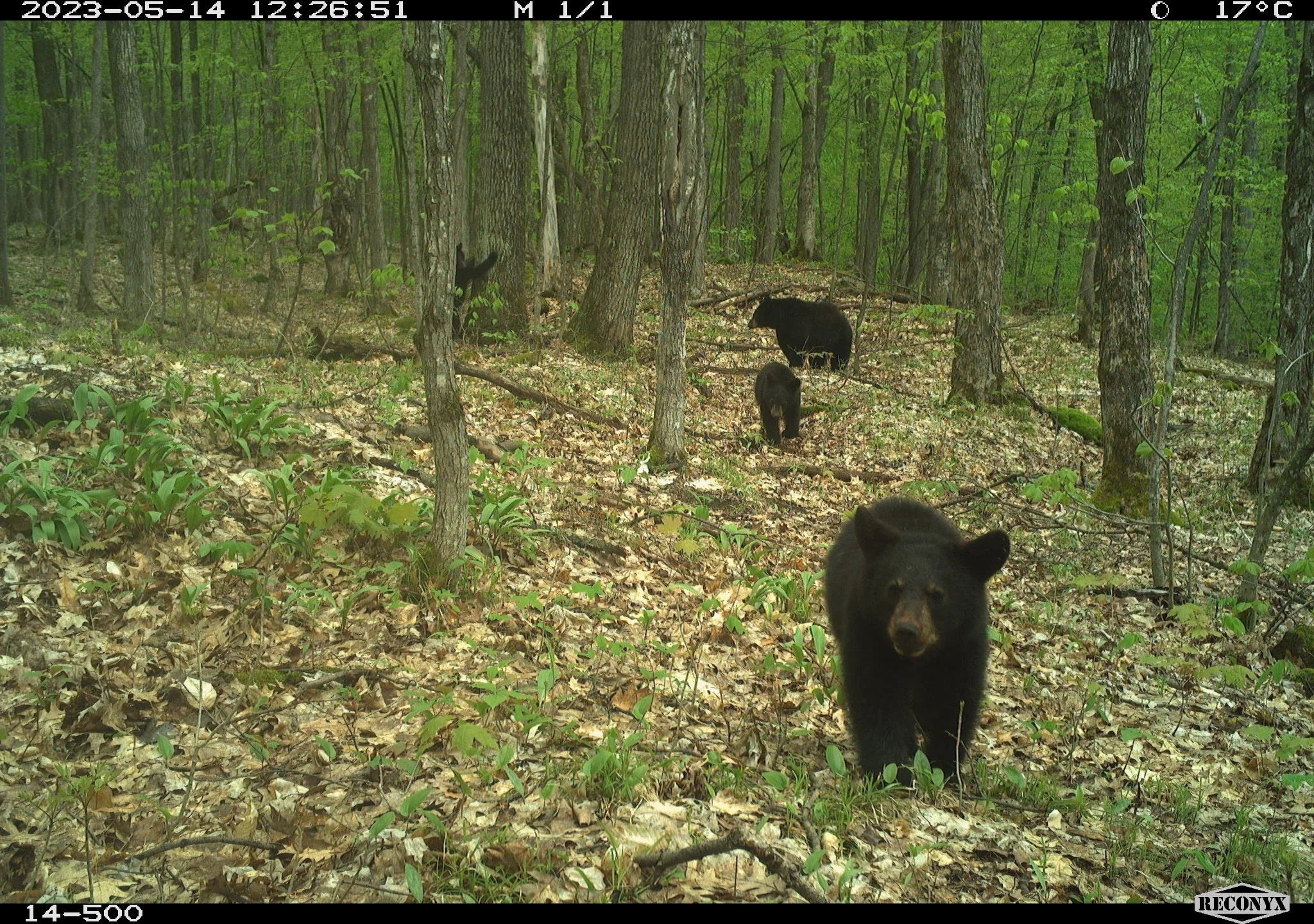A day-in-the-life of biodiversity fieldwork in Gatineau Park
Lilli Gaston, MSc Student
In partnership with the National Capital Commission (NCC), my MSc research explores the outcomes of traffic reduction on bird and mammal diversity at an urban-wildland interface: the beautiful Gatineau Park. Join me for a day-in-the-life of fieldwork servicing acoustic recorders, camera traps, and surveying breeding birds!
First, we wake up at 4:00am. Breakfast, coffee, & sleepy chats are had in the car until we reach the park, throw on our bug jackets and binoculars, and hike to our first site! Luckily for me, Laura—a field technician and Honours student in the lab—and a team of lovely volunteers help out in the field each day.
When we reach a site, we conduct a breeding bird survey. We aim to start our first survey by sunrise, when birds are most vocal, from late May to early July, during peak breeding season. For 15 minutes, we play chickadee calls (which draws in all kinds of bird species! *Note: we have a scientific land access permit which allows us to play bird recordings in the park. Using bird callback is not recommended for visitors who are birdwatching in the park) and record every bird species we see and hear. What we’re really interested in, however, is any sign of breeding activity – this includes birds carrying nest-building material, birds carrying food to feed their young, catching a glimpse of a breeding pair, or, when we’re lucky, actually finding a nest or fledglings! We recently found our first wild turkey nest, pictured below. We always make sure to keep a safe distance whenever we find a nest in the park. This is also a good reminder why it’s so important for visitors to stay on official trails, so as not to disturb birds that nest on the forest floor.
After a survey, it’s time to service the acoustic recorder and camera at that site. We make sure to set up all cameras and recorders at least 100 m away from any active-use trails to respect the privacy of visitors in the park. Servicing our devices involves swapping out SD cards and batteries and checking for damage…like so:
We peeked at the camera images, which quickly revealed the culprits:
After servicing, we hike to the next site and repeat! We usually hit around 6 sites in a morning before the birds start quieting down, and then we head back home to sort through all the data collected that day. This includes thousands and thousands of audio files and camera trap images, but first, it’s time to take a nap :)
I’ll be updating this blog throughout the summer with more fun camera trap images, cool bird encounters, and other anecdotes from the field! A huge thank you to the NCC for their generous contributions and for allowing us to conduct this research in Gatineau Park!




